





Many gardeners are familiar with London Pride. It is a very carefree groundcover for shady spots. However, for the most part, it is an under-used plant. Let me re-open your eyes to the beauty of London Pride.
(Editor's Note: This article was originally published on February 13, 2010. Your comments are welcome, but please be aware that authors of previously published articles may not be able to respond to your questions.)
Recently I introduced Dave's Garden members to the mossy saxifrages. In this article I will describe another group of saxifrages commonly referred to as London Pride. Botanically, this group of saxifrages belong to the section Gymnopera. There are only four species within this group, all native to Europe, especially the Pyrenees. These species include S. cuneifolia, S. hirsuta, S. spathularis and S. umbrosa. Plants produce many rosettes of leathery, somewhat spoon-shaped leaves and in fact, they are often grown as groundcovers. In spring and early summer, plants produce wiry stems 10 to 30 cm topped with loose sprays of tiny white to pink flowers that are usually spotted with red. All the species hail from shady to semi-shaded areas, mostly under mixed woodland situations. In the garden they are most prolific in shady areas that remain reasonably moist. However, they will tolerate reasonably dry, shaded situations. They are not generally bothered by pests or diseases. Plants are easily propagated from their runner-like stolons that produce new rosettes at their tips.
By far, the most popular member is S. x urbium, a garden-made hybrid between S. umbrosa and S. spathularis. This is the popular London Pride that has been known in cultivation since the 1700s. The common name may allude to the fact that this plant, like Londoners themselves, rapidly re-colonized (and rebuilt) bombed sites after the London Blitz of the second world war.
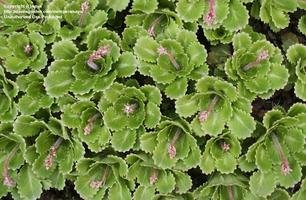
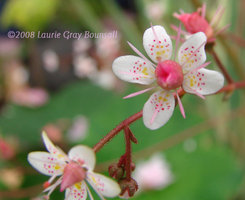
Details of S. x urbium
Nearly every nursery in zones 4 to 8 sell London Pride. Due to its ease of propagation, it is often an underappreciated plant. However, it does have a certain charm and close examination of the flowers will show their exquisite beauty. Also commonly available is the yellow-spotted leaf version called 'Aureopunctata'. In the UK, you may find up to 40 named selections! The British love their London Pride! Perhaps the most notable of these is 'Colvillei' which has serrated leaves and white flowers.
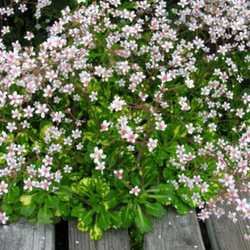
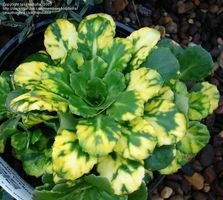
Details of S. x urbium 'Aureopunctata'
In the wilds of the Pyrenees there is a natural hybrid between S. umbrosa and S. spathularis called S. x primuloides (aka S. x urbium var. primuloides). This plant has a smaller stature than the typical London Pride with delicate pink flowers. There are two popular named cultivars, 'Clarence Elliot' (aka ‘Elliot's Variety') and ‘Walter Ingwersen' (aka ‘Ingwersen's Variety').
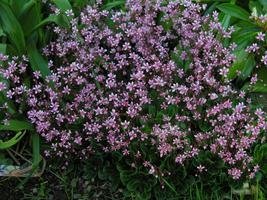
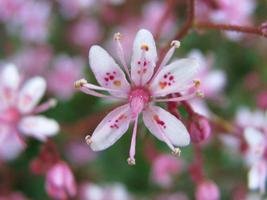
Details of S. x primuloides 'Clarence Elliot'
For some reason, the species are rarely seen in cultivation. One slight exception is S. cuneifolia, which is the smallest of the species with quite small, thick, rounded leaves. This choice saxifrage is too small to be useful as a groundcover but makes a wonderful addition to a shade garden or rock garden if robust neighbors are kept at bay! There is also a yellow-spotted version of this species called ‘Variegata'. It is indeed a delicate beauty! Look for these at specialist alpine nurseries.
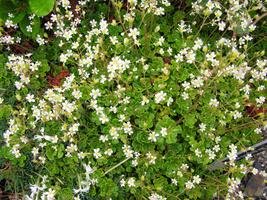

Saxifraga cuneifolia and its cultivar 'Variegata'
I would like to thank begoniacrazii (close-up of S. x urbium), happenstance (foliage of S. cuneifolia 'Variegata'), kniphofia (foliage of S. x urbium 'Aureopunctata') and saya (S. x urbium) for the use of their pictures.
Copyright © www.100flowers.win Botanic Garden All Rights Reserved